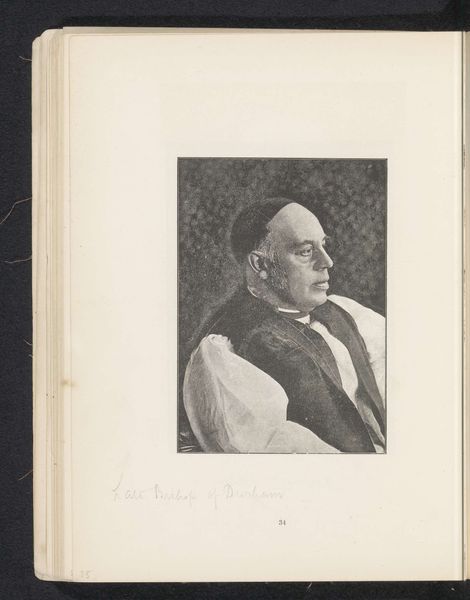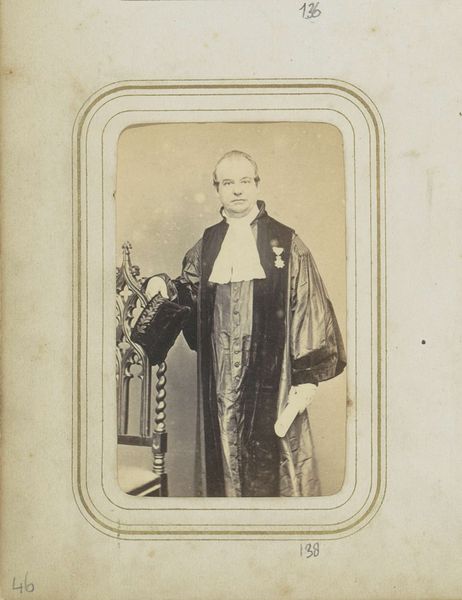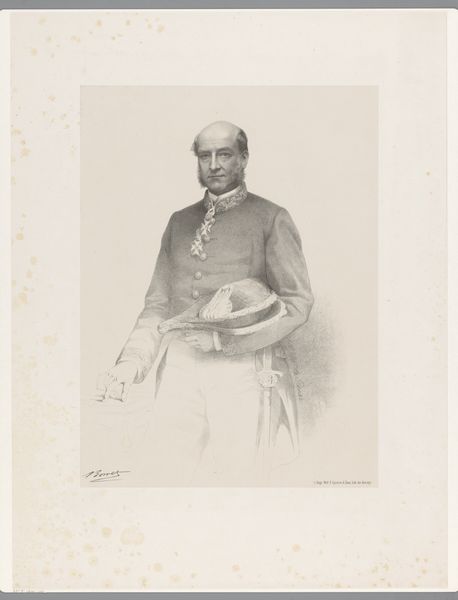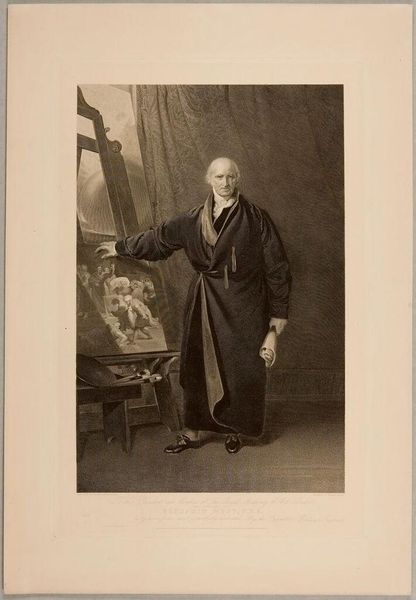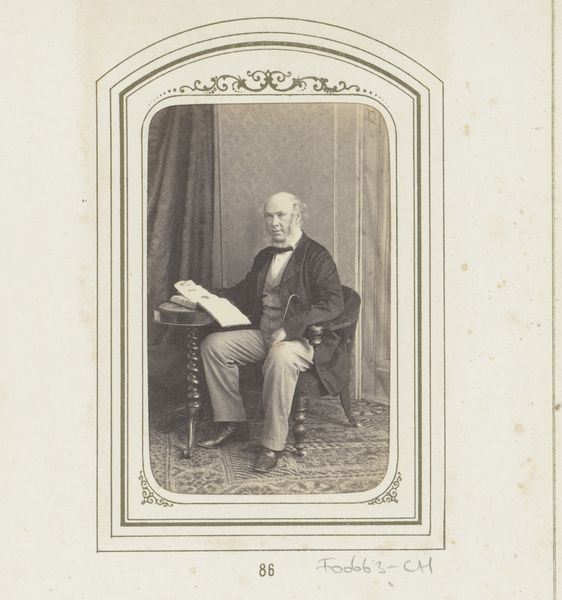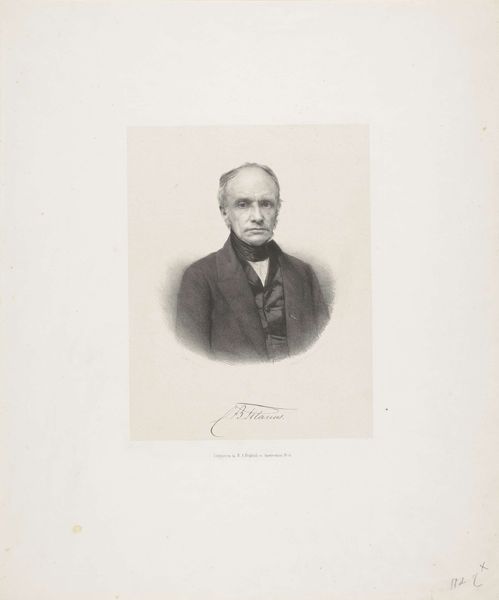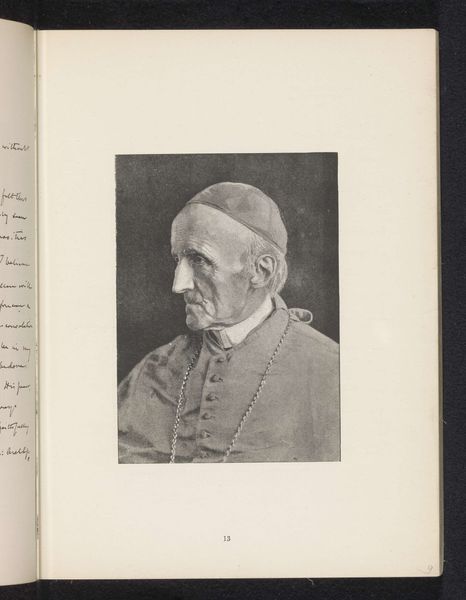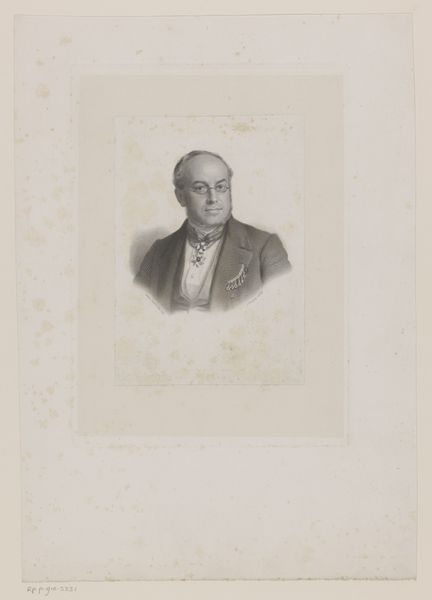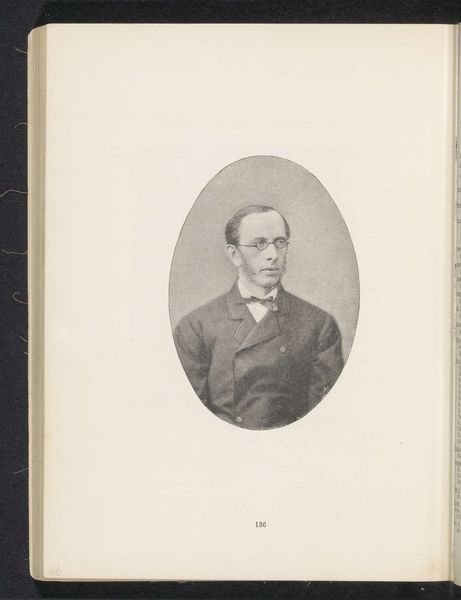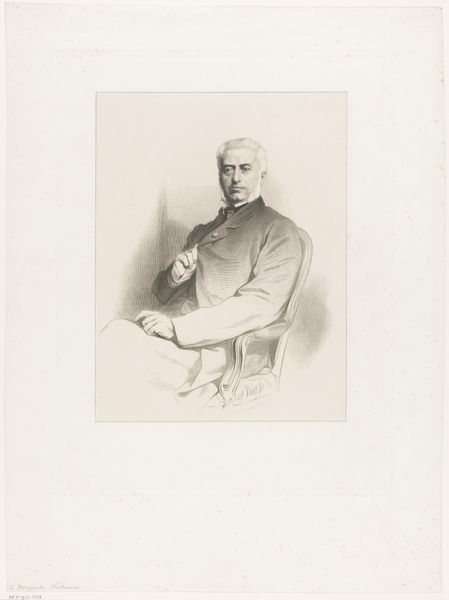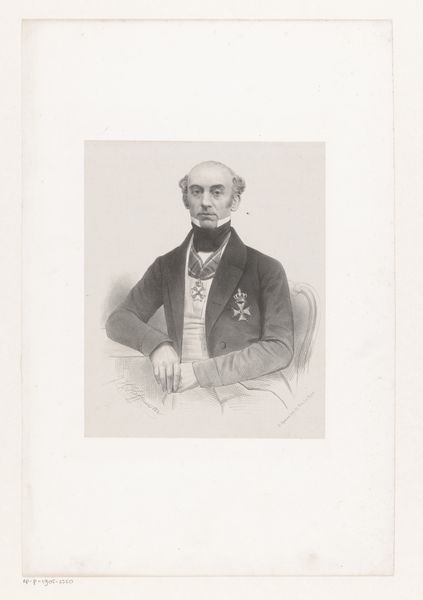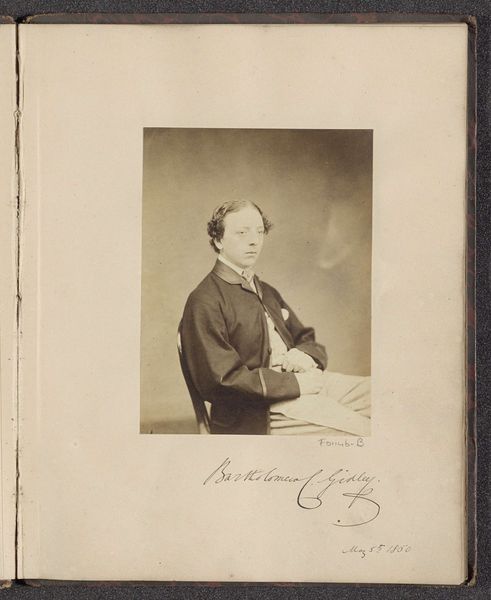
Fotoreproductie van een schilderij, voorstellende een portret van William Magee, aartsbisschop van York before 1891
0:00
0:00
walery
Rijksmuseum
photography, gelatin-silver-print
#
portrait
#
photography
#
gelatin-silver-print
#
academic-art
Dimensions: height 202 mm, width 124 mm
Copyright: Rijks Museum: Open Domain
Editor: Here we have "Fotoreproductie van een schilderij, voorstellende een portret van William Magee, aartsbisschop van York," a gelatin silver print from before 1891 by Walery, here at the Rijksmuseum. The composition feels very formal. What do you see in this piece? Curator: I see a portrait steeped in the visual language of power and religious authority. Think about what it meant to reproduce an oil painting through photography at that time. It democratizes the image somewhat, but still frames Magee within established power structures. Who had access to either? More importantly, who *didn’t*? Editor: So, the photographic reproduction changes how we see the subject, perhaps even making it a statement about class and accessibility? Curator: Precisely. Photography was evolving, but portraiture of this kind was largely reserved for elites. The performative aspect is crucial too. He's Archbishop Magee, yet we see him mediated through Walery's lens and photographic technology, a further degree of separation that both reinforces and subtly challenges notions of power. How do we interpret Magee's place within broader social and political dialogues, given the church's relationship with, say, colonialism? Editor: That is interesting; thinking of the impact of the Church, did the photograph challenge that notion, or enhance the impact and power that they held? Curator: It likely amplified it within certain circles. Think about the photograph's circulation, its intended audience, and how the reproduction served to disseminate an image of authority. It is an important factor when we consider whose stories are being told and from whose perspective. It’s essential to continually question the systems perpetuating these power dynamics within the art world and beyond. Editor: I see how looking at the photograph as a cultural object opens up a new discussion, and it is all so important. Thank you for your expertise! Curator: My pleasure. Keep questioning! That's where real understanding begins.
Comments
No comments
Be the first to comment and join the conversation on the ultimate creative platform.
